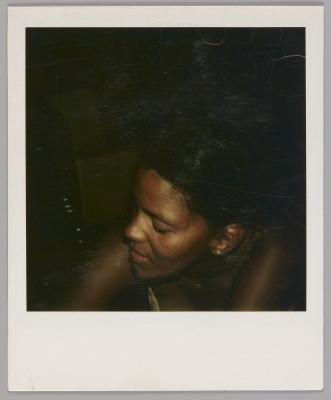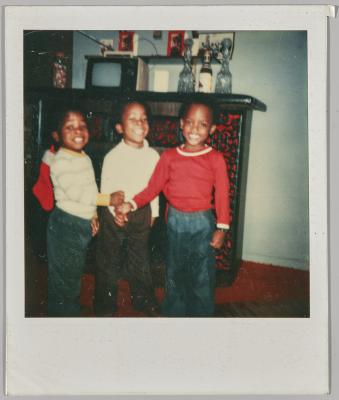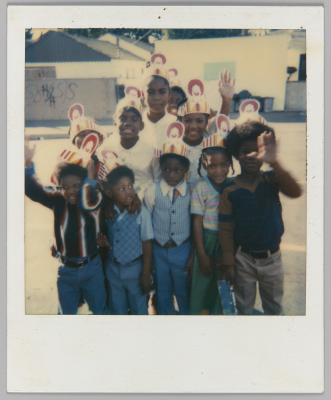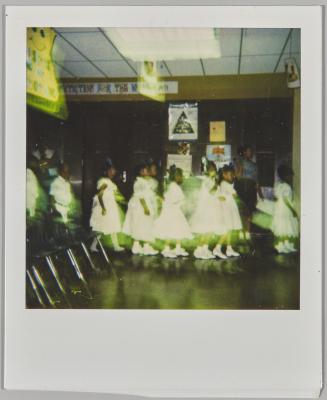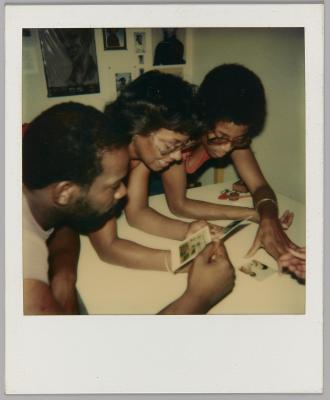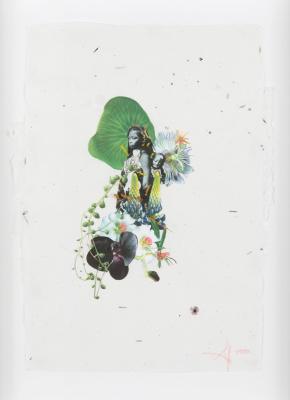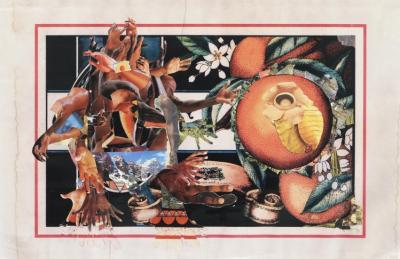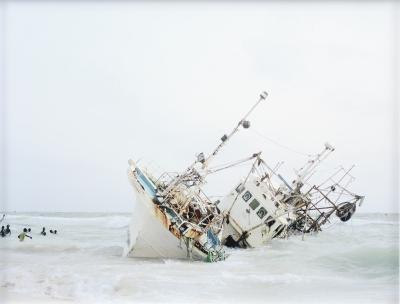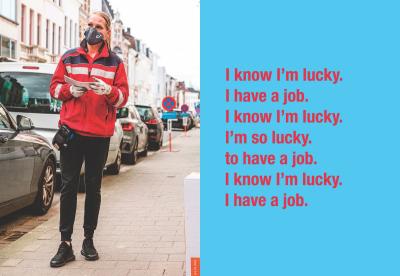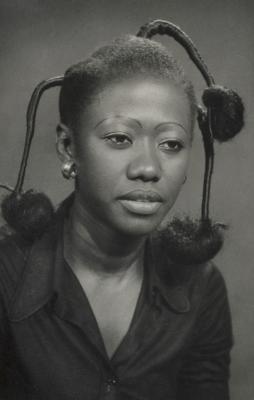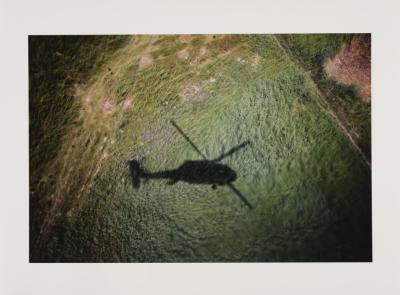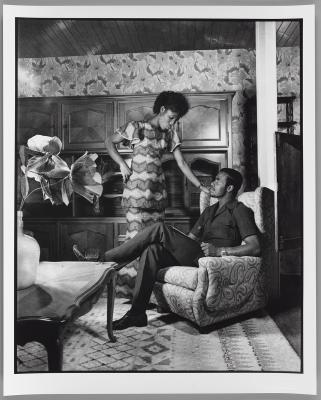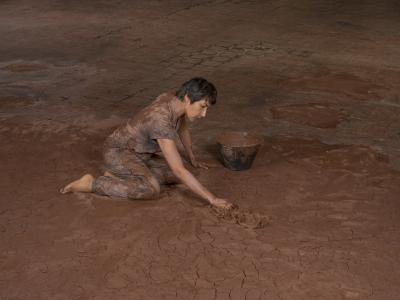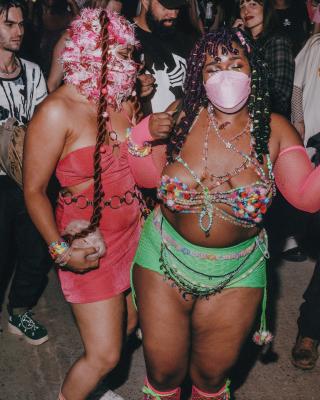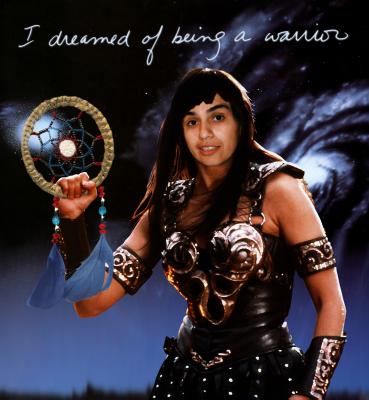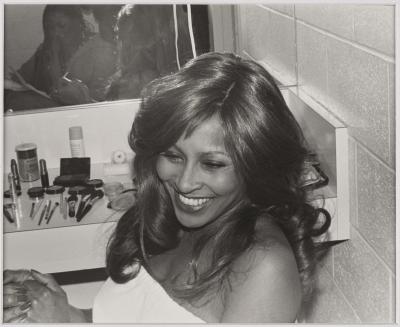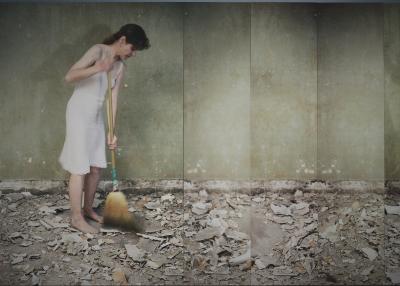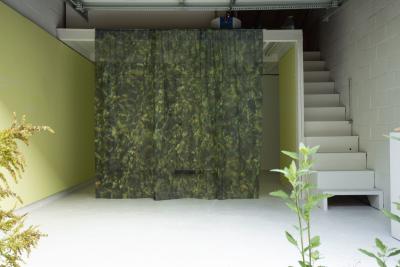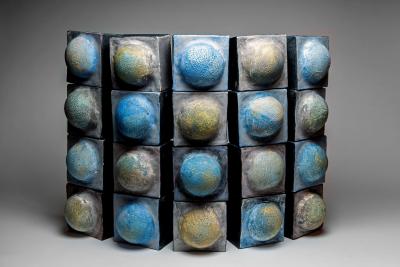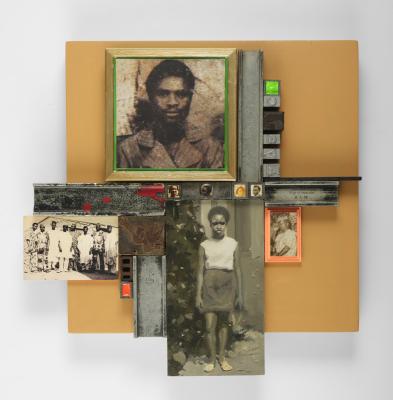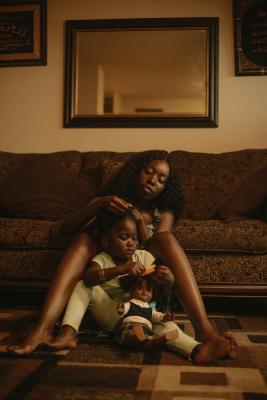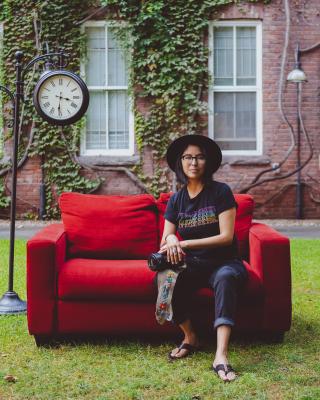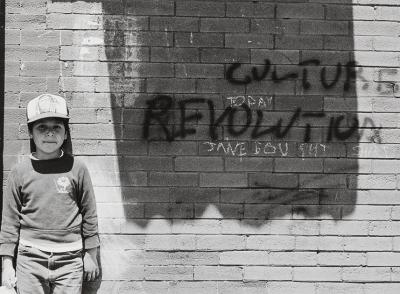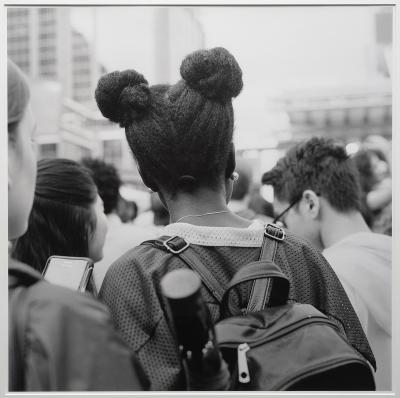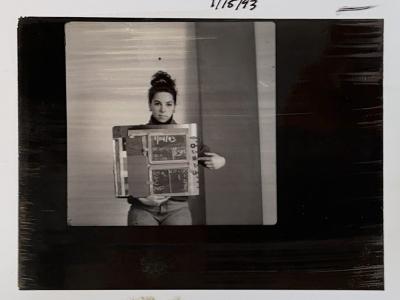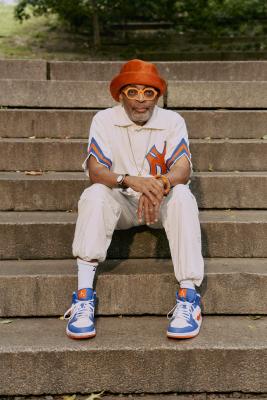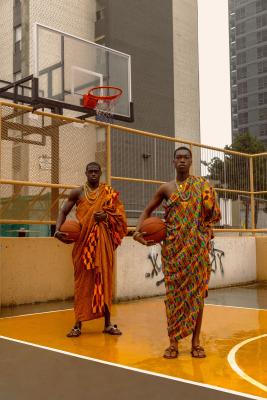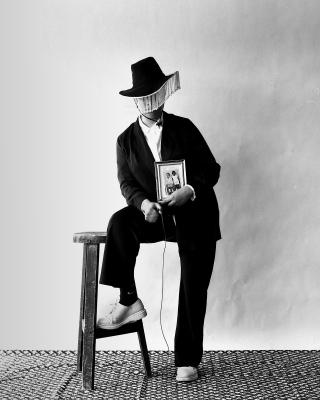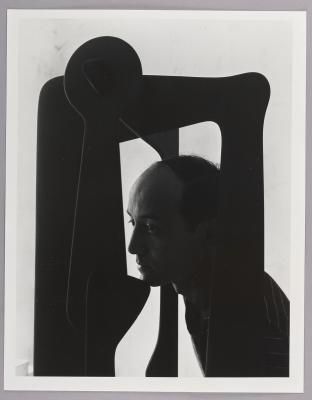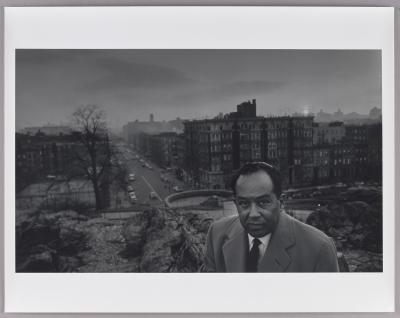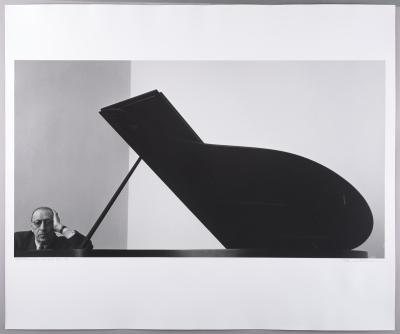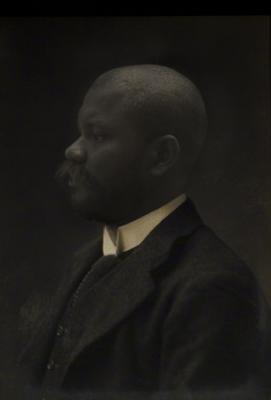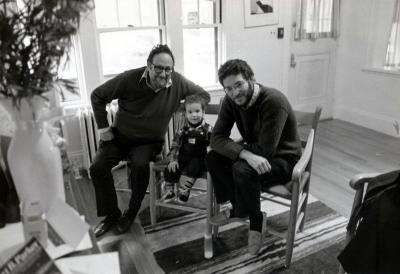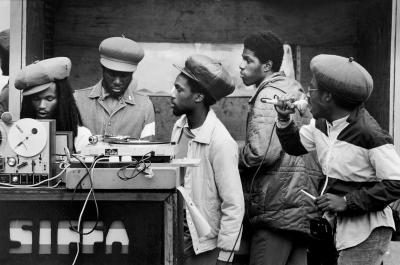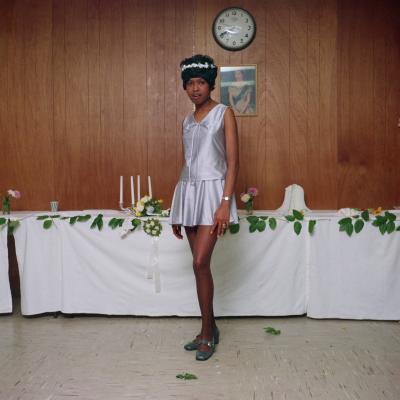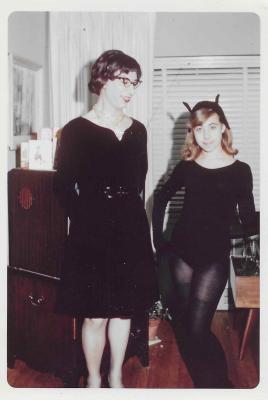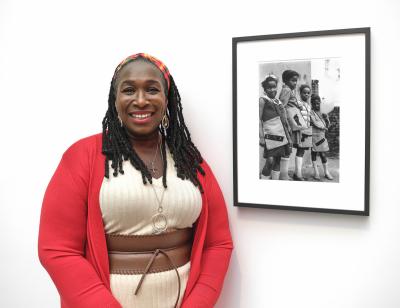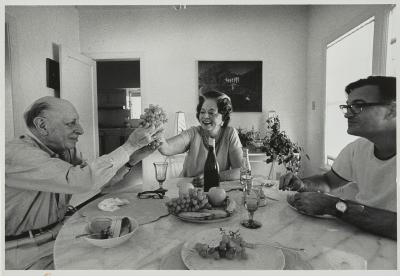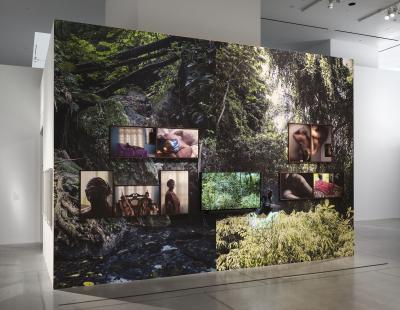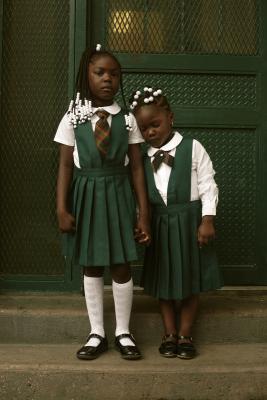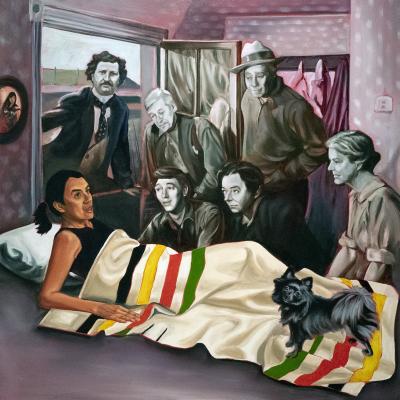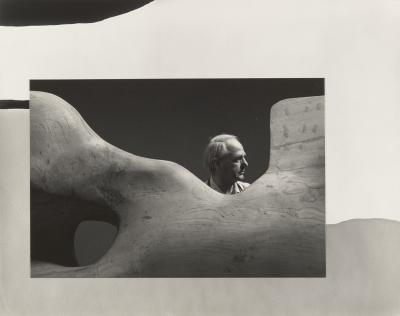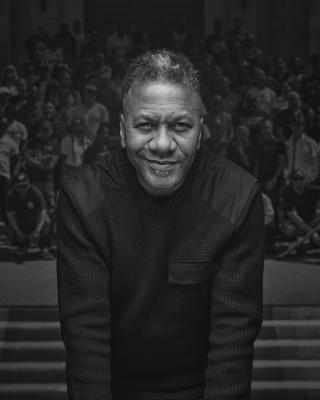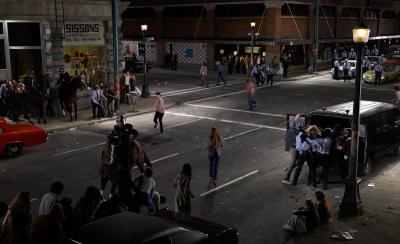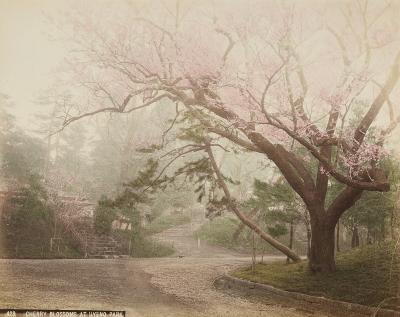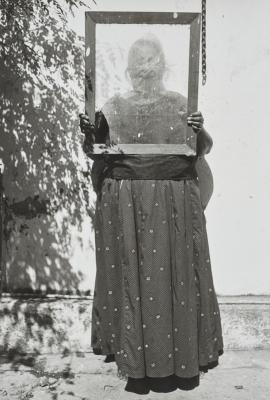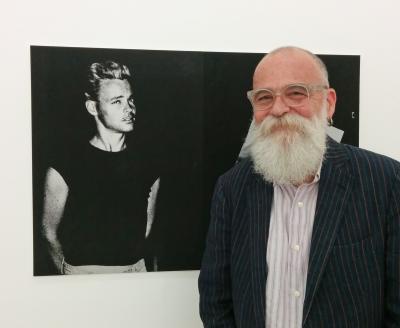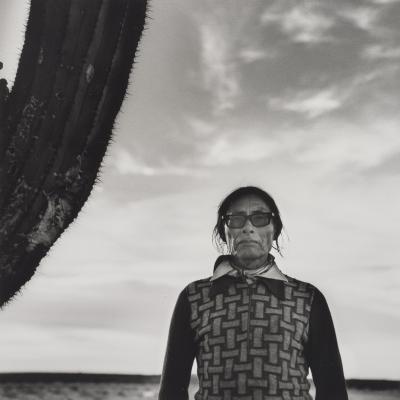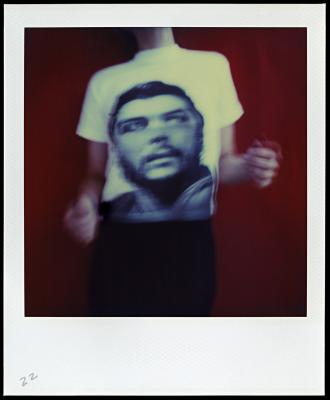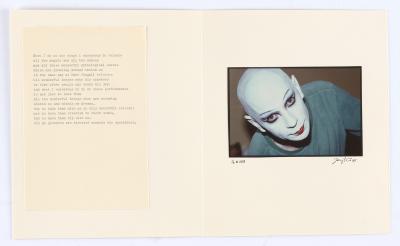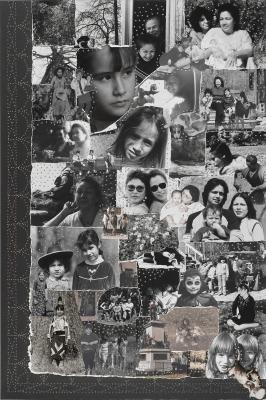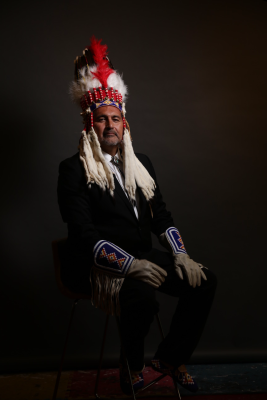Kelani Abass finds meaning in the archive
The Nigerian artist discusses his work on view at the AGO and the importance of archival photography.
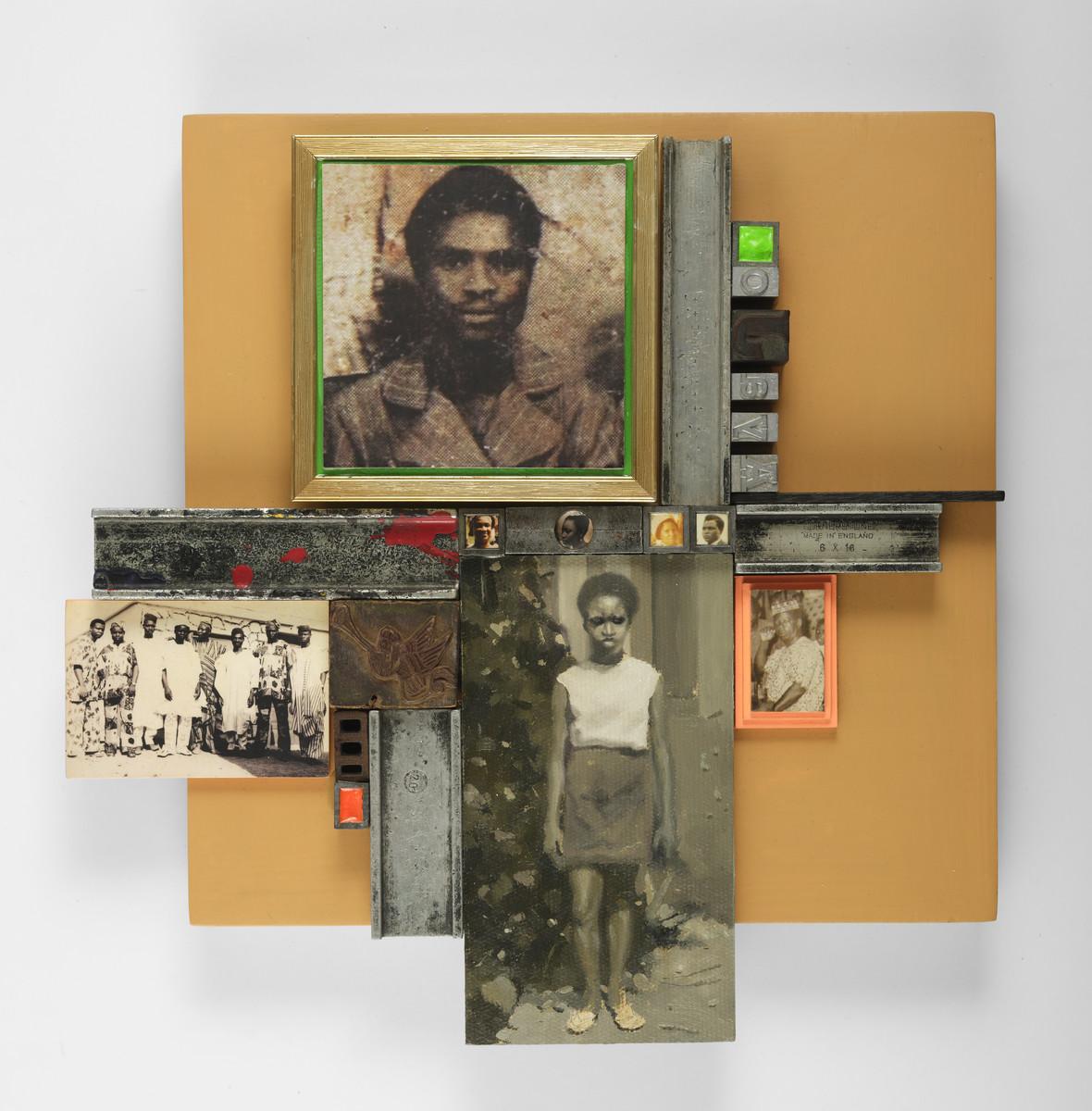
Kelani Abass. Scrap of Evidence, Ayajo, 2021. digital print, oil on canvas, cornerstone, rubber block, Overall: 30 × 35 cm (11 13/16 × 13 3/4 in.). Art Gallery of Ontario. Purchase, with funds from Friends of Global Africa & the Diaspora, 2022. 2022/7085
Kelani Abass developed a keen interest for archival photographs while working in his family's letterpress printing business as an adolescent. Then in 2009, he discovered a unique family record that would forever change the course of his artistic practice. It sparked the idea for Scrap of Evidence – a powerful mixed media series that combines archival photographs, paintings, and metallic letters and symbols sourced from his father’s old printing press.
Scrap of Evidence is on view now at the AGO as part of the exhibition Re-Mixing African Photography: Kelani Abass, Mallory Lowe Mpoka and Abraham Oghobase. By exploring photographic histories in West and Central Africa—specifically studio portraiture—these three contemporary African artists reimagine traditions through a range of introspective, experimental, and critical approaches.
Abass, who lives in Lagos, Nigeria, spoke to Foyer about Scrap of Evidence, his fascination with the archive, and some of the distinct techniques he uses in his work.
Foyer: You’ve stated before that Scrap of Evidence “serves as a historical recalling in which [you] stand as the mediator.” Can you elaborate further on that statement, and possibly share some of your intentions in creating the series?
Abass: I believe that the past teaches us about the present, and possibly what is about to come. It allows us to have a better understanding of our culture and environment. In 2009, I began a series of research and interviews regarding my family archive, and upon getting into my family home, I realized most of the materials left behind by my late father had been discarded. A book (a family journal which documented personal philosophy, old customs and traditions) documented by my grandparent was about to be cast into a fire, for a religious reason. That was the moment I realized I had to do something about it, and I understand that the best way to protect these powerful materials is to integrate them into my practice in order to allow others to experience and learn from them.

Kelani Abass. Scrap of Evidence, Makohun I, 2019. Digital print, oil on canvas, cornerstone, rubber block, Overall: 30 × 35 cm. Art Gallery of Ontario. Purchase, with funds from The Garrett-Longe Family, 2022. © Kelani Abass. 2022/7086
Foyer: So much of your work incorporates vintage and archival photographs. When and how did your interest in the archive first develop? When did you decide to begin artistically exploring that interest?
Abass: I have been interested in archives and photographic techniques since my early days working in my family's letterpress printing business; mostly because of the limitation we always encountered in reproducing photographs in letterpress printing.
My first involvement with lithography exposed me to photography in a different way, even before I enrolled in art school. I used photographs as a reference in executing my composition in figurative paintings, then I realized that I could actually incorporate them alongside painting. I, however, wasn't interested in photography as a medium, more so in the direction of integrating it into my practice to understand how my art might be, how I could improve on my methodology and also how to better implement my ideas.
Foyer: There seems to be a recurring technique/motif of fragmentation in your work – specifically the Casing History and Scrap of Evidence series’ – where you frame the individual photographs of a collage with wood or metal (sometimes even creating smaller tiled segments that overlay a larger photograph). Can you talk about the development of this technique, and why it has become a staple in your practice?
Abass: In Scrap of Evidence, I attempt to mimic 'chase' a metal frame that holds types and blocks together in letterpress printing, and for Casing History, the type trays are used as a ground to hold archival photos and text together just like the way a canvas would grip dripping paint.
In both sculptural bodies of work, I have been able to engage a technique that holds history together as well as reframing it; independently keeping each image and memory separate from leaking into each other. I see 'archives' as a medium to navigate time because it has the ability to take us through phases. My background in letterpress printing and painting further helps me forge a greater understanding and technical acuity on how to manipulate all forms of materials and explore the power that technology has given to archives.
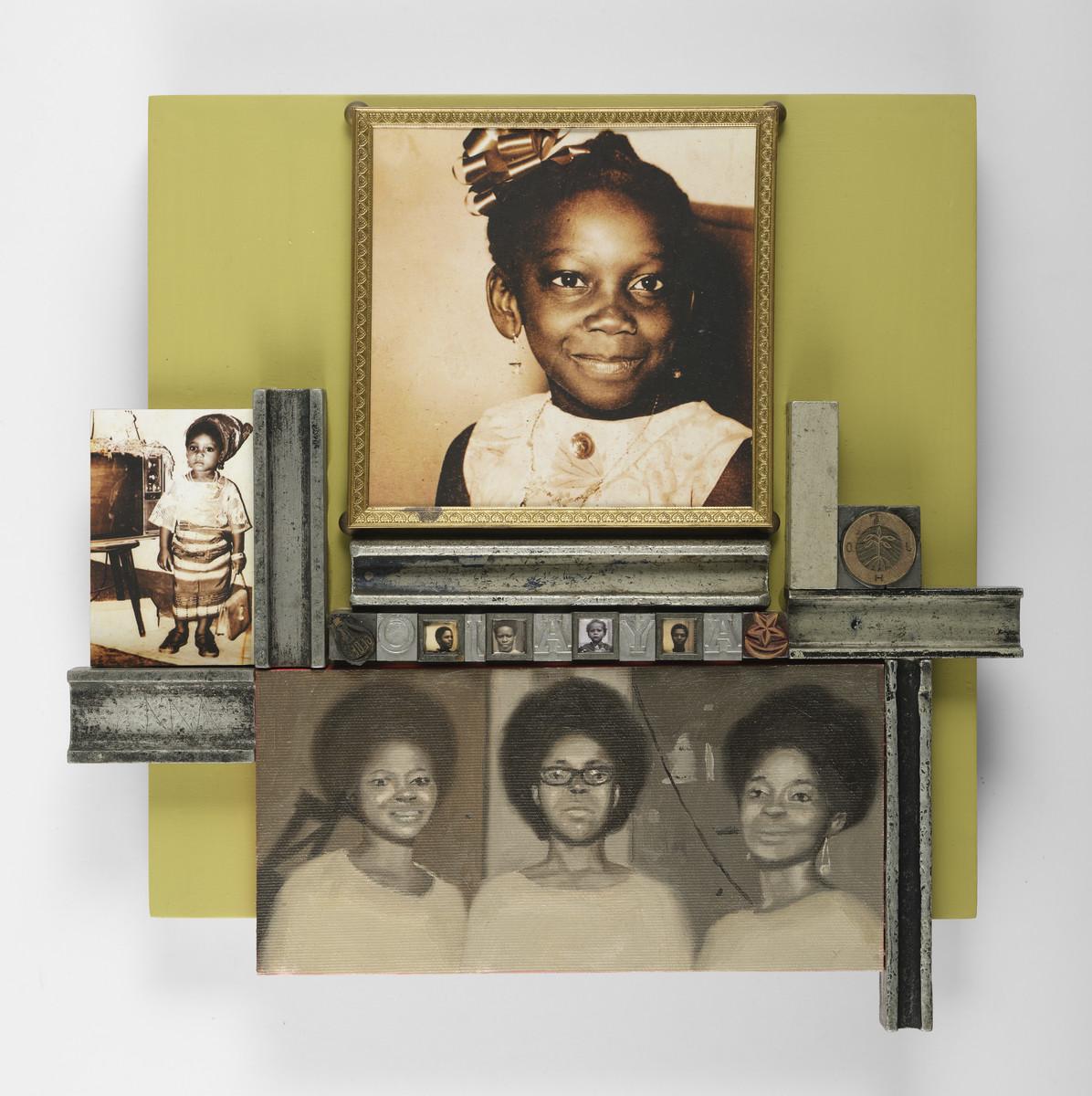
Kelani Abass. Scrap of Evidence, Ayajo II, 2021. digital print, oil on canvas, cornerstone, rubber block, Overall: 30 × 35 cm (11 13/16 × 13 3/4 in.). Art Gallery of Ontario. Purchase, with funds from Friends of Global Africa & the Diaspora, 2022. 2022/7084
Foyer: What’s next for you artistically? Are there any new projects or current works in progress that you can share some details about?
Abass: There is more to explore in Time and Memory, personal, collective, historical and archival
In my new project, through the documents from my family archive, I am interested in investigating the 'process' way and manner in which a deceased individual's “Will” is interpreted, and whether it was written or verbally communicated by the deceased. How important is a written document that allows individuals to direct the way their inheritance is maintained and divided after their demise?
Re-Mixing African Photography: Kelani Abass, Mallory Lowe Mpoka and Abraham Oghobase is on view now on Level 2 of the AGO in the Murray Frum Gallery (249).

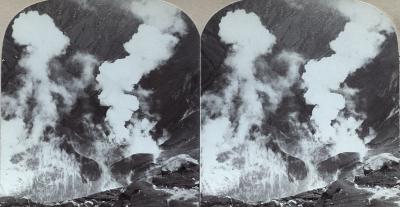
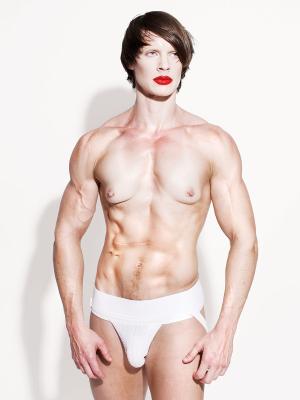
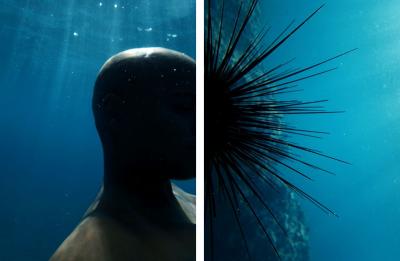

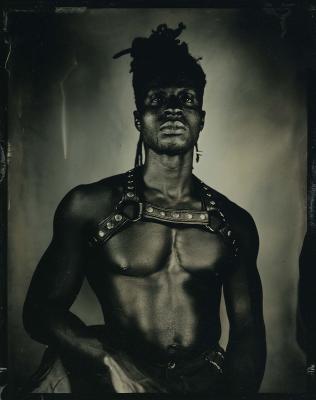

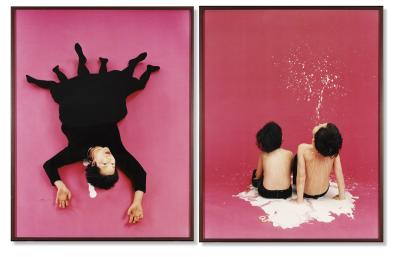
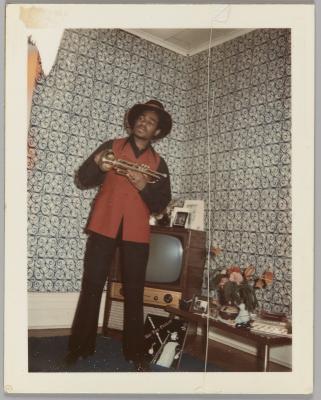
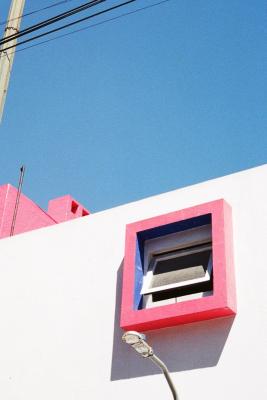

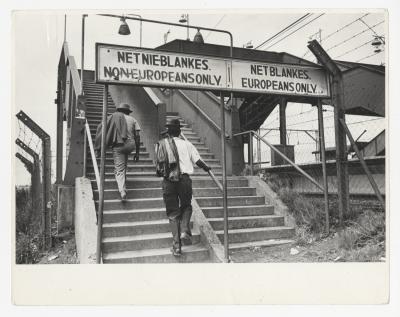
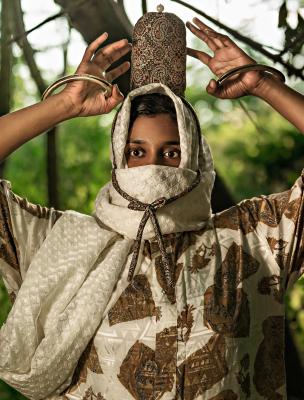
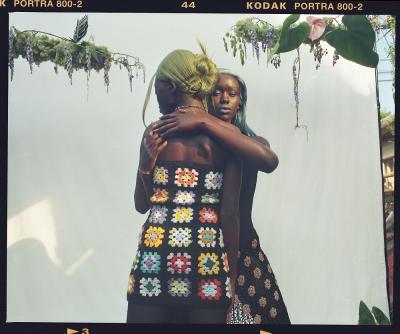
![Unknown photographer, Chillin on the beach, Santa Monica [Couple on beach blanket]](/sites/default/files/styles/image_small/public/2023-04/RSZ%20WMM.jpg?itok=nUdDiiKr)
